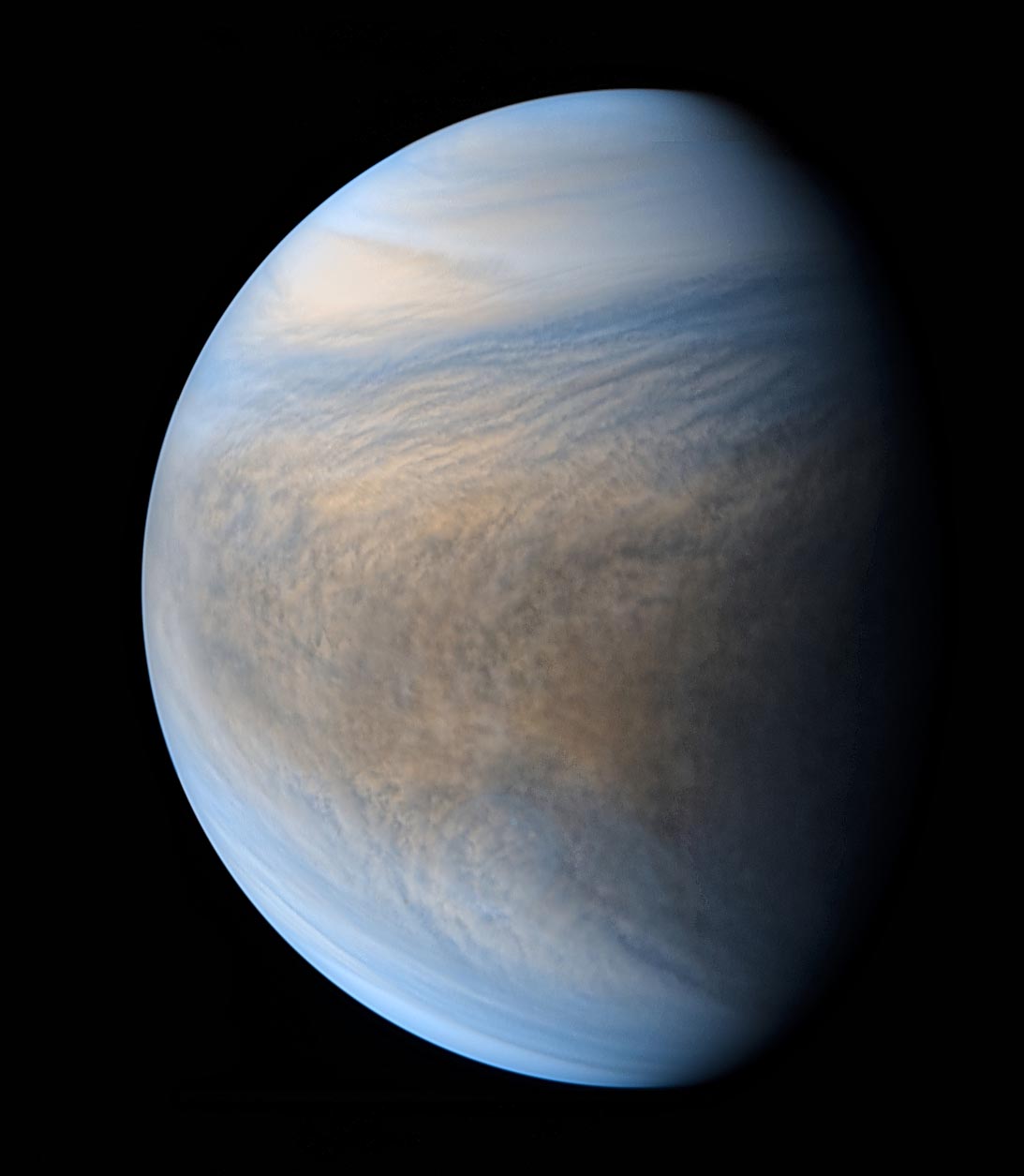
JAXA / ISAS / DARTS / Damia Bouic
The detection of phosphine on Venus demands confirmation on two levels. Chemistry labs across the globe are already investigating possible inorganic production routes, to see if anything besides life could account for the molecule’s presence in the atmosphere. The observation itself also requires independent verification. But there are considerable challenges to detecting phosphine’s other chemical fingerprints here on Earth.
The solution may come from space.
Phosphine and COVID-19
For the past six months, Clara Sousa-Silva (MIT), the team’s quantum chemist, has been attempting to obtain observations on various ground-based instruments. But COVID-19 kept getting in the way.
“I tried to get time on SOFIA, a telescope which makes observations from a hole in the side of an airplane,” she says. “And we were approved. But so far, the pandemic has made it impossible.” (The SOFIA observatory is now flying again, but has a backlog of several months of observations.)
NASA / Ames
Attempts to get time on the Very Large Telescope and the Infrared Telescope Facility also failed on account of the pandemic, which has shuttered or slowed observatories worldwide. Even when she applied for — and was awarded — observing time at the Gemini Observatory, that came to nothing as well. “All three runs this year were canceled due to COVID-19,” she says.
Even assuming that life on Earth returns to normal in the next year, and that ground-based facilities are interested in verifying the presence of phosphine on Venus, it could still prove difficult to find other spectral lines of phosphine. The thickness of the Venusian atmosphere, and the general propensity for molecules to get tangled up with each other, both hinder remote detections.
ESO / M. Kornmesser / L. Calçada & NASA / JPL / Caltech
“We used the most favorable wavelength,” says Jane Greaves (Cardiff University, UK), who led the study that detected phosphine at Venus. “Any others won’t be as easy to see from Earth. Not that this first one was actually easy — it took years to reduce the data.”
The View from Above
NASA
A direct observation made within the atmosphere would be ideal, as the signal could be amplified, and multiple wavelengths at which the molecule absorbs light could be identified. There are several late-stage proposals already in the works that might be able to achieve this. Two of NASA’s four Discovery Program finalists, DAVINCI+ and VERITAS, propose to send missions to Venus as early as 2026.
VERITAS is a surface geology and geophysics mission. The satellite’s instruments will have a high spatial resolution, but a moderate spectral resolution; probably not good enough to see phosphine. DAVINCI+ is an entry probe which would measure the atmosphere’s composition while slowly floating down to the surface.
“It has a tunable laser spectrometer, which in theory could detect phosphine,” says David Grinspoon (Planetary Science Institute) and coinvestigator on DAVINCI+. “NASA is cautious about changing things too much, especially this late. But fortunately, it already has an instrument in the plan that’s very relevant to this question.”
ESA-ESTEC CDF Phase 0 study 2018 / VR2 Planets (François Civet) / CC BY-SA 4.0
The European Space Agency’s EnVision orbiter, proposed for launch in the early 2030s, would have a mass spectrometer in its payload, but it’s unlikely that it will be able to see phosphine in the atmosphere.
“I don’t think this is something that EnVision will be able to detect. The reported amount of phosphine is tiny, making up only 0.000002% of the atmosphere,” says Colin Wilson (Oxford), EnVision’s science lead. “But we will double-check!”
Beyond orbiters and probes, the key to verifying the phosphine detection and determining its source will probably lie with longer-duration observations from within the atmosphere. The Soviet Vega missions in the 1980s showed that long-life balloons can be successful, but those spacecraft only lasted a few days. The NASA Venus Flagship Mission Study has proposed an updated version which could dwell in the clouds for months at a time. It could launch in the 2030s if approved.
“The balloon will explore the cloud layer for two months, with specific instruments designed to detect biological material if present,” says Wilson, who is also involved with the flagship proposal.
When Could We Go To Venus?
The soonest a space agency could probably get to Venus will be with DAVINCI+ in 2026, assuming it’s selected next year. But a private venture could launch as soon as 2023. Rocket Lab, an aerospace manufacturer and smallsat launch service provider, announced on August 4th that they had increased their Electron rocket’s payload capacity, enabling interplanetary missions. Shortly thereafter, CEO Peter Beck announced that they were planning to deploy one or more smaller probes into Venus’s atmosphere. When the news about the phosphine discovery broke, he tweeted:
At the Royal Astronomical Society press briefing on September 14th announcing the discovery, Sara Seager (MIT) spoke about the possibility of a collaboration with Rocket Lab.
“We have been talking to them. They are amazing to be so flexible,” she said. “Their spacecraft would only be about 15 kg, and they would reserve about 3 kg for a payload. So we have to work hard to make sure an instrument that would be useful for the search for life would fit into that payload, and we’re really looking forward to it.”
If these last-minute negotiations are fruitful, the team could see a spacecraft fly to Venus and attempt to verify their results in only three years, a much more compacted timeline than anyone would have expected. But Greaves is trying not to get her hopes up.
“We’ll just have to wait and see what happens with the missions, it’s all very early days,” she says. “Astronomy takes time, and I know I might have to wait years, or even decades to know if there really is phosphine, and if there is, what’s making it.”